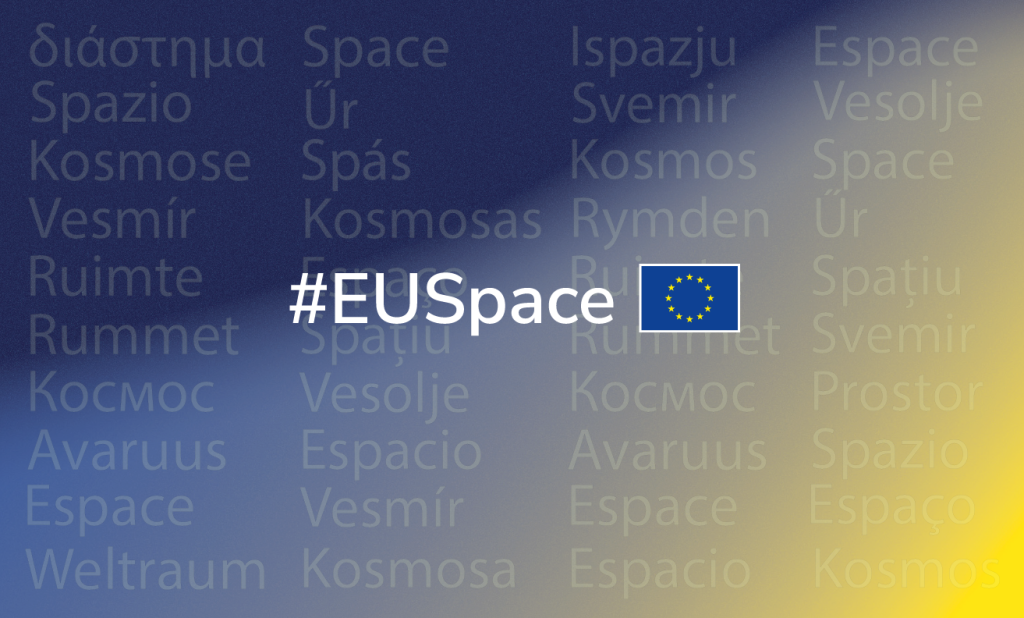Celebrating 9 May with the European Union Space Programme #EUDelivers

The 9 May marks the anniversary of the signing of the Schuman Declaration, the agreement that saw the beginning of the European Union that we know today. This monumental date also coincides with the third anniversary of EUSPA, the EU agency dedicated to space and space technology. Not only do we share this anniversary, but like Europe, the EU Space Programme is dedicated to delivering the best results for EU citizens.
An ever-expanding EU Space Programme
Just like the 27 Member States, the European Union Space Programme continues to go from strength to strength with representation in various EU countries. Two of the services at the forefront of the programme Galileo and EGNOS - have revolutionised navigation technology in the EU.
The last year alone saw massive strides in Galileo’s search and rescue services. The workshop Satellite-based Services for Disaster Risk Management held in Cyprus highlighted the importance of satellite-based services can support disaster risk management and search and rescue operations. Parallel to the workshop the Cypriot authorities organised a Search and Rescue exercise, which saw the RLS signal picked up in 2 minutes, showcasing Galileo’s swift response time.
In December, the GIMS project took the spotlight by combining the Galileo European global navigation satellite system (GNSS), the Copernicus synthetic aperture radar (SAR) and inertial measurement units (IMUs) to detect and monitor landslides. The placing of GIMS stations in Slovenia proved lifesaving, when they detected a landslide in the village of Koroška Bela, allowing authorities to evacuate 900 villagers.
Galileo has also made strides in the transport industry over the years with the Dutch province of Noord-Brabant using Galileo alongside other technologies to create detailed and comprehensive maps of the area’s bike paths to improve the safety for seasoned cyclists.
Spain quickly followed suit with Barcelona’s e-biking scheme AMBici, using Galileo for its 2,600 electric bikes and 236 docking stations located across 15 area municipalities which began in June 2022.
It’s not just Galileo that has been changing the lives of EU citizens. EGNOS has placed a vital role in the aviation sector since its certification in 2011. In 2019, Austrian air navigation services provider Austro Control introduced EGNOS services to seven airports/heliports. Vilnius airport followed suit, with the implementation of EGNOS in 2020, as part of the EGNOS Lithuania project. EGNOS is now used in more than 500 airports in the EU, proving that it is unbeatable in its regional navigation capabilities.
Today, Galileo boasts an impressive 4 billion receivers currently using the services. It still stands as the world’s most precise navigation system. It is of utmost importance as many strategic sectors, like agriculture, energy, aviation and defence, to name a few, depend on the availability of precise positioning and timing information. 10% of EU's yearly gross domestic product relies on satellite navigation, and this is set to increase.
And it doesn’t stop there. 2023 saw EUSPA gain responsibility for the EU Space Surveillance and Tracking (EU SST) Front Desk, located in Madrid. EU SST opened its Collision Avoidance service worldwide last year, to all spacecraft operators. Today, more than 400 satellites are protected by EU SST from the risk of collision with space debris or other spacecraft, and approximately 100 of them are from non-EU operators – such as from the United States, Norway and Switzerland - numbers which are expected to continue growing.
We also have the upcoming GOVSATCOM, an exciting new programme which aims to provide secure and cost-efficient communication capabilities to security and safety critical missions and operations.
It is safe to say, that the European Union Space Programme will continue to be a driving force not only in space technology but as an integral part of the European Union, its achievements and the lives of its citizens.
Media note: This feature can be republished without charge provided the European Union Agency for the Space Programme (EUSPA) is acknowledged as the source at the top or the bottom of the story. You must request permission before you use any of the photographs on the site. If you republish, we would be grateful if you could link back to the EUSPA website (http://www.euspa.europa.eu).